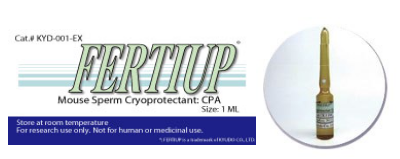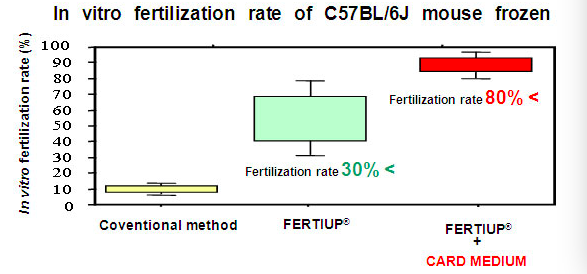六种ELISA小鼠样品处理方法总结
本文将介绍小鼠心脏组织、小鼠肝组织、小鼠脾脏肿瘤等六种ELISA小鼠样品处理方法,如需购买相关产品或想要相关文献,请联系我们上海金畔生物。
1.小鼠心脏组织处理方法
● 提取缓冲液:100 mM PIPES (pH 7)、500mM NaCl、0.2%Triton X-100、2mM EDTA、200μM PMSF和蛋白酶抑制剂混合物(Sigma-Aldrich)
● 步骤:取左心室组织,在异戊烷中冷冻。将~10 mg左心室组织于2–3 ml提取缓冲液中匀浆,然后在4℃下16000g离心30分钟。上清用于 ELISA法测定BDNF蛋白水平。单位pg /mg总蛋白。
● 参考文献:Agrimi, J., C. Spalletti, C. Baroni, G. Keceli, G. Zhu, A. Caragnano, M. Matteucci, S. Chelko, G. A. Ramirez-Correa, D. Bedja, V. Casieri, N. Di Lascio, A. Scalco, A. P. Beltrami, N. Paolocci, M. Caleo and V. Lionetti (2019). ‘Obese mice exposed to psychosocial stress display cardiac and hippocampal dysfunction associated with local brain-derived neurotrophic factor depletion.’ EBioMedicine 47: 384-401.
2.小鼠肝组织处理方法
● 提取缓冲液:RIPA缓冲液(50 mM Tris–HCl,150 mM氯化钠,1 mM EDTA,1%NP-40,1%脱氧胆酸钠,0.1%十二烷基硫酸钠),加蛋白酶抑制剂混合物(100×;Cell Signaling Technology,USA)
● 步骤:肝组织(50 mg)在提取缓冲液中匀浆。离心取上清,采用ELISA法检测了IL‐25, IL‐33, IL‐1β, MMP2, MMP9, 及TIMP1的含量。
● 参考文献:Loh, Z., R. L. Fitzsimmons, R. C. Reid, D. Ramnath, A. Clouston, P. K. Gupta, K. M. Irvine, E. E. Powell, K. Schroder, J. L. Stow, M. J. Sweet, D. P. Fairlie and A. Iyer (2019). ‘Inhibitors of class I histone deacetylases attenuate thioacetamide-induced liver fibrosis in mice by suppressing hepatic type 2 inflammation.’ Br J Pharmacol 176(19): 3775-3790.
3.小鼠脾脏肿瘤的制备方法
● 提取缓冲液:50 mM磷酸钾,pH 7.1,0.1 M NaCl,2 mM EDTA,0.4 mM phenylmethylsulfonyl fluoride,60 μg/mL soybean trypsin inhibitor,2 μg/mL leupeptin,2 μg/mL aprotinin,2 μg/mL pepstatine
● 步骤:切除脾脏肿瘤组织,立即在液氮中冷冻并在-70 °C下储存。冷冻组织在冰浴预冷提取缓冲液中化冻。冰浴,撕裂组织。然后4℃下,超声处理。4℃下以100000 × g离心15分钟去除碎片,所得上清再次在4℃下以100000 × g离心30分钟。上清液含有胞浆蛋白,颗粒包含膜部分。
● 参考文献:Yao, M., S, Kargman, E.C. Lam, C.R. Kelly, Y.X. Zheng, P. Luk, E. Kwong, J.F. Evans and M.M. Wolfe (2003) Inhibition of cyclooxygenase-2 by rofecoxib attenuates the growth and metastatic potential of colorectal carcinoma in mice. Cancer Research 63(3):586-592.
4.小鼠肺组织处理方法
● 提取缓冲液:1×磷酸盐缓冲液(PBS)
● 步骤:左肺在1×磷酸盐缓冲盐水中机械破坏,经过4次冷冻/解冻循环以打破细胞膜,然后4℃下,5000g,离心5分钟,回收上清用于ELISA法测定Ang II 浓度。
● 参考文献:Gonzalez-Tajuelo, R., M. de la Fuente-Fernandez, D. Morales-Cano, A. Munoz-Callejas, E. Gonzalez-Sanchez, J. Silvan, J. M. Serrador, S. Cadenas, B. Barreira, M. Espartero-Santos, C. Gamallo, E. F. Vicente-Rabaneda, S. Castaneda, F. Perez-Vizcaino, A. Cogolludo, L. J. Jimenez-Borreguero and A. Urzainqui (2020). ‘Spontaneous Pulmonary Hypertension Associated With Systemic Sclerosis in P-Selectin Glycoprotein Ligand 1-Deficient Mice.’ Arthritis Rheumatol 72(3): 477-487.
5.小鼠肾脏组织处理方法
● 提取缓冲液:0.1 M Tris-HCl (pH 7.4)
● 步骤:将0.5 g肾组织与5 ml 提取缓冲液混合。用机械搅拌器搅拌均质。匀浆离心15分钟(5000g)两次。取上清用ELISA法测TNF-α和IL-1β浓度。
● 参考文献: Jaremek, M., Nieradko-Iwanicka, B (2020). ‘ The effect of subacute poisoning with fenpropathrin on mice kidney function and the level of interleukin 1 beta and tumor necrosis factor alpha’ MOLECULAR BIOLOGY REPORTS 47(6):4861-4865.
6.小鼠脑组织处理方法
方法一:
● 提取缓冲液:0.9%生理盐水
● 步骤:麻醉小鼠,取脑组织。按每200 mg加1 ml的量加0.9%生理盐水,机械研磨,匀浆在4℃下以12000 rpm离心10 min。取上清用于ELISA法检测IL-1β, IL-6, 及TNF-α的含量。
● 参考文献:Lai, N., D. Wu, T. Liang, P. Pan, G. Yuan, X. Li, H. Li, H. Shen, Z. Wang and G. Chen (2020). ‘Systemic exosomal miR-193b-3p delivery attenuates neuroinflammation in early brain injury after subarachnoid hemorrhage in mice.’ J Neuroinflammation 17(1): 74.
方法二:
● 提取缓冲液:100 mM PIPES (pH 7)、500mM NaCl、0.2%Triton X-100、2mM EDTA、200μM PMSF和蛋白酶抑制剂混合物(Sigma-Aldrich)
● 步骤:取海马组织,在异戊烷中冷冻。将整个海马体于2–3ml提取溶解缓冲液中匀浆,然后在4℃下16000g离心30分钟。上清用于 ELISA法测定BDNF蛋白水平。单位pg /mg总蛋白。
● 参考文献:Agrimi, J., C. Spalletti, C. Baroni, G. Keceli, G. Zhu, A. Caragnano, M. Matteucci, S. Chelko, G. A. Ramirez-Correa, D. Bedja, V. Casieri, N. Di Lascio, A. Scalco, A. P. Beltrami, N. Paolocci, M. Caleo and V. Lionetti (2019). ‘Obese mice exposed to psychosocial stress display cardiac and hippocampal dysfunction associated with local brain-derived neurotrophic factor depletion.’ EBioMedicine 47: 384-401.
方法三:
● 提取缓冲液:PBS含有蛋白酶抑制剂混合物
● 步骤:处死动物并取头部。解剖获取脑区(海马体和皮质)。并用2-甲基丁烷在干冰上快速冷冻。将大脑样本置于含有蛋白酶抑制剂混合物的无菌PBS中,均质。4°C,11000 rpm,离心20分钟。取上清备用。
● 参考文献:Lee, J., S.L. Chan, and M P. Mattson (2002) Adverse effect of a presenilin-1 mutation in microglia results in enhanced nitric oxide and inflammatory cytokine responses to immune challenge in the brain. Neuromolecular Medicine 2(1):29-45.
更多详情,请联系上海金畔生物













